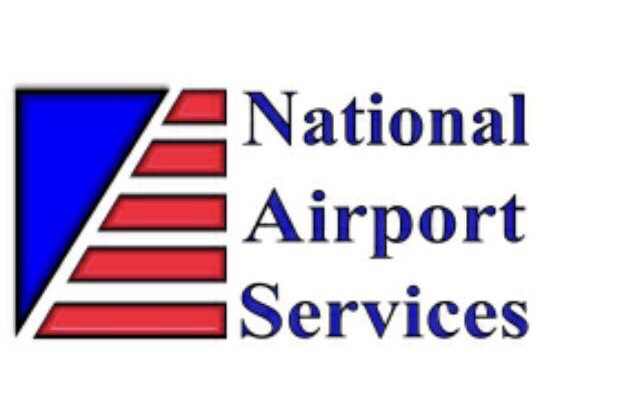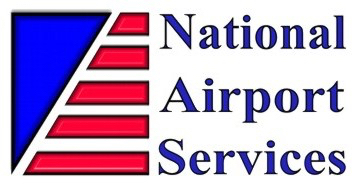Information
-
Station Yul
-
Audit Title
-
Audit Date
-
Document No.
-
Audit Report Prepared By:
-
Audit Team (if applicable)
-
Air Carriers(s) / Flight number
-
Gate(s) Observed
Crew members
-
Lead
-
Operator
-
Operator
-
Agent
-
Agent
-
Agent
-
Agent
1 - Pre-Arrival
-
1.1 - Ramp crew on gate before arrival.
-
1.2 - Every member of the team is wearing appropriate PPE.
-
1.3 - Lead conducted pre-flight briefing with crew.
-
1.4 - A FOD inspection of gate is completed.
-
1.5 - Chocks and cones available for the arrival are stowed outside the restraint line with parking brakes applied.
-
1.6 - Equipment is positioned behind the equipment restraint line with parking brakes applied.
-
1.7 - Passenger boarding bridge is in its fully retracted position and parked in the proper box/circle.
-
1.8 - Visual guidance system is set up for the type of aircraft arriving.
-
Additional Comments
-
Additional Pictures
2 - Arrival
-
2.1 - Marshaller & wing walkers are using wands/lights.
-
2.2 - Marshaller is using correct hand signals.
-
2.3 - Marshaller has a continuous line of sight of wing walkers.
-
2.4 - Aircraft engines are spooled down and the anti-collision beacons off before the aircraft main gear is chocked.
-
2.5 - Aircraft is chocked correctly.
-
2.6 - Ramp gives confirmation (thumbs up) to the bridge operator to approach the aircraft.
-
2.7 - External bridge power remains stowed until bridge is in final position on the aircraft door.
-
2.8 - Lead completes an arrival inspection of the aircraft (prior to equipment approaching the aircraft).
-
2.9 - Safety cones are positioned correctly.
-
2.10 - Aircraft is chocked prior to any ramp agent or equipment approaching the aircraft.
-
2.11 - Portable stairs / ladder are used to open up cargo hold doors (a belt loader may be used if a portable stairs is unavailable).
-
Additional Comments
-
Additional Pictures
3 - Ground Service Equipment
-
3.1 - All drivable equipment is inspected prior to use.
-
3.2 - All equipment is free of FOD.
-
3.3 - All GSE servicing the aircraft is equipped with a rubber bumper guard.
-
3.4 - All GSE guided to the aircraft is performed using approved hand signals and is in proper position.
-
3.5 - All GSE backing away from the aircraft has a guide person using approved hand signals and is in proper position.
-
3.6 - Guide person is not positioned between GSE and the aircraft (must be positioned to one side).
-
3.7 - All equipment approach the aircraft at walking speed and carry out 2 brake checks / safety stops.
-
3.8 - Passenger steps are correctly positioned with stabilizers deployed.
-
3.9 - Hydraulics are depressurized and pawl locks on passenger steps are in the fully extended locked position to allow the full weight of the steps to rest on the locks.
-
3.10 - Tractors and dollies positioned are not within 6 feet of the aircraft.
-
3.11 - Safety handrails (belt loader), side rails (LDL/MDL) or safety platform (MDL40/60) are fully extended and used.
-
3.12 - GPU is correctly positioned (no 3-way connection), brake set and chocked.
-
3.13 - Belt loader is correctly positioned and chocked.
-
3.14 - ULD Loader is properly positioned and guide rails used.
-
3.15 - Cargo door control panel door is closed prior to positioning the loader to the cargo hold.
-
3.16 - Loader operator receives hand signal prior to raising / lowering the rear platform.
-
3.17 - ULD’s are not rotated on the loader while the rear platform is in the elevated position.
-
3.18 - Loader operator monitors clearances for all ULD’s.
-
3.19 - Carts and dollies do not contact the loader.
-
3.20 - If in-plane systems are not working correctly has the airline been notified.
-
3.21 - Lavatory Service Unit is positioned with a guide person, properly chocked and operated correctly.
-
3.22 - Water Service Unit is positioned with a guide person, properly chocked and operated correctly.
-
3.23 - GSE does not block fuel truck emergency movement.
-
Additional Comments
-
Additional Pictures
4 - Unloading / Loading
-
4.1 - Lead has a copy of the offload instructions.
-
4.2 - Cargo holds inspected for leakage and damage.
-
4.3 - Lead has a copy of the LIR, any changes to the LIR are notified to the Lead.
-
4.4 - Aircraft is loaded in accordance with the LIR.
-
4.5 - Baggage and cargo are checked before loading.
-
4.6 - ULD’s are inspected for damage prior to loading.
-
4.7 - ULD container cards / pallet tags are verified prior to loading.
-
4.8 - Appropriate manual handling techniques are used by all staff during the handling of baggage and cargo.
-
4.9 - Bulk baggage and cargo are properly secured.
-
4.10 - All ULD’s in the cargo holds are locked and secured.
-
4.11 - All cargo compartment nettings are secured and verified.
-
4.12 - Portable stair / ladder is used to close cargo hold doors (a belt loader may be used if a portable stairs is unavailable).
-
4.13 - Any deviations to the planned loading are noted on the LIR.
-
4.14 - NOTOC is signed and presented to the Captain.
-
4.15 - LIR is annotated and signed correctly by the Lead.
-
4.16 - BRS / Bingo cards are reconciled and checked by the bag room staff.
-
Additional Comments
-
Additional Pictures
5 - Departure
-
5.1 - Pre-departure briefing is conducted.
-
5.2 - Nose gear bypass pin is properly inserted prior to attaching the tow bar.
-
5.3 - The correct tow bar is used for the aircraft type.
-
5.4 - Prior to the push the tow bar and tug are connected and aligned to the centerline of the aircraft.
-
5.5 - All servicing equipment safely removed from the aircraft (walking speed) and parked behind the equipment restraint line.
-
5.6 - Chocks and safety cones are properly removed at the appropriate time.
-
5.7 - Lead completes a pre-departure inspection of the aircraft.
-
5.8 - Pushback pathway confirmed clear of obstacles.
-
5.9 - Air start is properly positioned & attached to the aircraft (no 3-way connection).
-
5.10 - Pushback does not start until wing walkers are ready and in position using proper wands/lights.
-
5.11 - Wing walkers are in a continuous line of sight of the push tug driver.
-
5.12 - Push tug, tow bar and aircraft are aligned to release tension prior to tow bar disconnect.
-
5.13 - Tow bar is disconnected from the push tug first.
-
5.14 - Operator does not straddle tow bar but faces the tractor and has both legs on the same side of tow bar.
-
5.15 - By-pass pin removed and displayed to the flight crew.
-
5.16 - Marshaller uses proper signals to hold aircraft until all personnel are clear from the aircraft.
-
5.17 - Push tug return to the gate by driving forward into the gate area with the tow bar attached to the rear of the push tug.
-
Additional Comments
-
Additional Pictures
6 - Third Party Activity
-
6.1 - Is any third party activity observed on the ramp free from unsafe practice?
-
Additional Comments
7 - Auditors Comments / Agreed Actions and Objectives
-
Additional Pictures
-
Auditors Comments
-
Agreed Actions and Objectives
-
Auditors Signature
CONCLUSIONS
Findings and Observations
-
Finding
-
Finding or Observation Description
-
Corrective Action Taken
-
Corrective Action Due By
-
Severity of Finding
Misc.
-
Drawing or Layout of Area Requiring Additional Explanation
Acknowledgments
-
Signature of Auditor
-
Signature of Auditee









